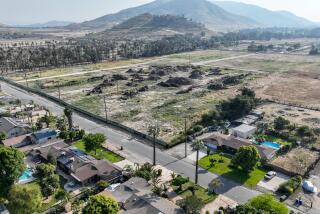Forget downtown or the âburbs. The far-flung exurbs are where people are moving

HAINES CITY, Fla. â Not long ago, Polk Countyâs biggest draw was citrus instead of people. Located between Tampa and Orlando, Floridaâs citrus capital produces more boxes of citrus than any other county in the state and has devoted tens of thousands of acres to growing millions of trees.
But last year, more people moved to the county than to any other in the United States, almost 30,000.
Bulldozed citrus groves in recent years made way for housing and big box stores that could one day merge the two metropolitan areas into what has half-jokingly been dubbed, âOrlampa.â
The migration â and property sprawl â reflects a significant kind of growth seen all over the country this decade: the rise of the far-flung exurbs.
Outlying communities on the outer margins of metro areas â some as far away as 60 miles from a cityâs center â had some of the fastest-growing populations last year, according to the U.S. Census Bureau. Those communities are primarily in the South, like Anna on the outskirts of the Dallas-Fort Worth metro area; Fort Mill, S.C., outside Charlotte, N.C.; Lebanon outside Nashville; and Polk Countyâs Haines City.
For some residents, like Marisol Ortega, commuting to work can take up to an hour and a half one way. But Ortega, who lives in Haines City, about 40 miles from her job in Orlando, says itâs worth it.
âI love my job. I love what I do, but then I love coming back home, and itâs more tranquil,â Ortega said.
The rapid growth of far-flung exurbs is an after-effect of the COVID-19 pandemic, according to the Census Bureau, as rising housing costs drove people further from cities and remote working allowed many to do their jobs from home at least part of the week.
Polk Countyâs Latino population has grown from one-fifth to more than a quarter of the total over the last five years, driven by Puerto Rican migration from the island after 2017âs Hurricane Maria and then from New York during the pandemic.
The share of non-Latino white residents dropped from 61% to 54%, and the county has gotten more educated and wealthier, according to the Census Bureau. Despite the influx of new people, the countyâs Republican leanings have remained relatively unchanged.
Yeseria Suero and her family moved from New York to Polk County at the start of the decade after falling in love with the pace of life and affordability during a visit. Still, there were some cultural adjustments: restaurants closing early, barbecue and boiled peanuts everywhere, strangers chatting with her at the grocery store. Suero is now involved with the tight-knit Latino community and her two boys are active in sports leagues.
âMy kids now say, âYes, maâam,ââ she said.
Hurricanes and citrus diseases in Florida have made it more attractive for some Polk County growers to sell their groves to developers who build new residences or stores. Citrus-growing there declined from 81,800 acres and almost 10 million trees in 2014 to 58,500 acres and 8.5 million trees in 2024, according to federal agricultural statistics.
âIt hasnât been a precipitous conversion of citrus land for growth,â said Matt Joyner, CEO of Florida Citrus Mutual, a growerâs group. âBut certainly you see it in northern, northeastern Polk.â
An exurb of an exurb
Anna, Texas, more than 45 miles north of downtown Dallas, is seeing the same kind of migration.
It was the fourth-fastest growing city in the U.S. last year and its population has increased by a third during the 2020s to 27,500. Anna has gotten a little older, richer and more racially diverse. Close to 3 in 5 households have moved into their homes since 2020, according to the Census Bureau.
Schuyler Crouch, 29, and his wife fell in love last year with a house that was reasonably priced. They both work in Frisco, about 30 miles away, and it has become their go-to for eating out or entertainment instead of downtown Dallas, even though not long ago Frisco itself was considered a far-flung outpost.
Still, Crouch said he has noticed the exurbs keep getting pushed farther north as breakneck growth makes affordable housing out of reach in neighborhoods once considered on the fringes.
âThe next exurb we are going to be living in is Oklahoma,â he joked.
Schneider writes for the Associated Press.
More to Read
Sign up for Essential California
The most important California stories and recommendations in your inbox every morning.
You may occasionally receive promotional content from the Los Angeles Times.








